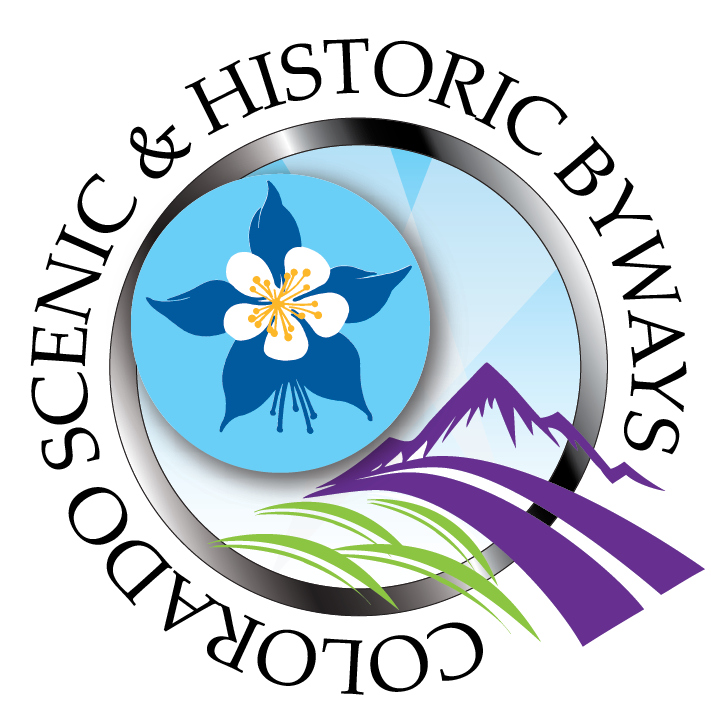Mount Harris: Conserving the Past and Ensuring the Future
The Yampa River in northwest Colorado is a haven for migratory birds, among them the sandhill cranes, which come to nest and raise their young on the wetlands’ rich habitat. The river is also a mecca for fly fishermen who float along its route, taking in 360-degree views of a quintessential Colorado landscape. However, development pressure in this part of Colorado is at an all-time high – and the attributes that make this place special are at risk of disappearing.
Thankfully, a stretch of river, along with its wildlife habitat, iconic scenery and storied past, is now permanently protected because of one local woman’s vision.
Landowner: Karen Whitney
Partner land trust: Colorado Cattlemen's Agricultural Land Trust
Location: Yampa River near Steamboat Springs
Topics: Historic preservation, wildlife habitat, outdoor recreation
Photo: Denver Public Library
A place with a past
From 1914 to 1958, an entire town occupied a one-mile stretch of the Yampa River between Hayden and Steamboat Springs. The company coal-mining town of Mount Harris was home to 1,300 residents and boasted a pool hall, boarding houses, a community center for dances and movies, and a two-story bandstand in addition to essential services. After the coal boom subsided, the town was dismantled and the buildings were auctioned off.
“Looking at it, you’d think it was just an empty piece of land, but people were born, worked, loved and died there,” said Karen Whitney. She wanted to preserve Mount Harris’s unique piece of history and honor its past. Not by building on it, but by protecting it.
“Conserving this space reverses the trend compared to the rest of the country.
Wild places have been developed, but this formerly developed area
is now a wild place.”
Preserving a piece of history, imagining a new use
For years, Karen drove past this stretch of the Yampa River, noticing the Mount Harris historical highway marker. The property had been closed to the public for more than six decades. Karen imagined what it would be like to protect it for the wildlife that rely on its habitat – and also for the history it holds.
When the property came on the market, Karen and her husband purchased it, and in late 2020, Karen approached the Colorado Cattlemen’s Agricultural Land Trust (CCALT) to help her conserve it. While CCALT may be more commonly associated with large agricultural lands it helps landowners conserve, its portfolio also includes protected open space, wildlife habitat, and viewsheds.
As a long-time volunteer with the Yampa Valley Crane Festival and a board member of the Colorado Crane Conservation Coalition, Karen’s driving force in saving this section of the Yampa was her desire to continue making it a haven for wildlife, including sandhill cranes.
Photo: Michael Menefee
“They’re almost prehistoric. They have a lot to teach us, and they keep coming back to the Yampa Valley,” she said, pointing to a need to protect the riparian areas these unique creatures rely on for food, roosting and protection from predators. Even though riparian areas in the Yampa Valley only occupy less than 3 percent of the western landscape, they provide habitat for 80 percent of the region’s wildlife, according to Friends of the Yampa.
But the greater sandhill cranes aren’t the only beneficiaries of the Yampa. Bald eagles and numerous trout species rely on the greater wetland and riparian habitat corridor here. Elk, mule deer, black bear, moose and mountain lion use the area for summer and winter range as well as production. And because the Mount Harris property is contiguous with conserved lands held by The Nature Conservancy, it contributes to a corridor that animals can pass through safely, with little human interaction.
On the 88 acres that make up the Mount Harris conservation easement, a small amount of agricultural activity also takes place. A local producer leases the land for cattle to graze in spring and summer, and a beekeeper keeps hives on the property to help pollinate nearby crops; a protective fence keeps the bears away.
Protecting a Routt County asset
The Yampa Valley is experiencing significant pressure to develop, especially in areas that feature water. The conservation easement Karen donated to CCALT restricts subdivision and limits the size of residential dwellings. Her voluntary restrictions will minimize human disturbance to wildlife habitat. At the same time, anglers who float along the river can enjoy the river’s stunning scenery.
“For all species, the river is a focal point.
’All animals at some point interact with the river.’”
“If development went unchecked along the riverbanks, it would be a very different experience for people,” said Amber Pougiales, CCALT’s northwest Colorado’s director of external relations. “Hunters and anglers who regularly recreate here see the importance of connectivity to habitat,” she added.
Karen agreed, pointing to the scenery as a Routt County asset that residents and visitors alike value and appreciate.
“Sandwiched between the highway and the river, the property is highly visible. Most visitors to Steamboat Springs pass by it. It’s big enough that it could be subdivided, and I didn’t want to see big mansions built there,” she said.
By conserving it, Karen added, “When you’re floating down the river, you’re passing through a wild place, not backyards.”
What’s next for Mount Harris?
Karen and her husband plan to restore a pond on the property, including stocking it with minnows and trout to keep algae under control, and will continue with weed mitigation – a “never-ending” task. They’re also considering additional river restoration projects and a revegetation effort near the pond.
But Karen’s attention right now is focused on honoring and celebrating the history of Mount Harris. She is working with the Hayden Heritage Center and Historic Routt County to locate and catalogue houses that were auctioned off in 1958. And she is creating opportunities for people who grew up in Mount Harris to come onto the land and enjoy it once again through picnics and other special gatherings.
Karen also takes daily pleasure in protecting a very special section of the Yampa River corridor – preserving the wildness of Mount Harris.
SUPPORTING A CRITICAL ECONOMY
In addition to helping a coveted wildlife population thrive, the Yampa River is an important contributor to a flourishing recreation and tourism economy. Its stunning viewsheds, recreational opportunities and wildlife viewing are key economic assets for the region and Colorado.
92% of Coloradans recreate outdoors.
The outdoor recreation industry contributes $62 billion dollars to the state each year, and accounts for over 500,000 jobs in Colorado.
Most popular activities: Walking and hiking followed by picnicking, camping and fishing.
Source: 2017 Economic Contributions of Outdoor Recreation in Colorado, Southwick Associates
The Mount Harris easement process was aided by a grant from Keep It Colorado. The grant helped Karen Whitney cover the costs associated with the transaction – such as the appraisal, the baseline documentation and surveys. Additionally, The Nature Conservancy and Colorado Parks and Wildlife’s Habitat Partnership Program provided funding for this project. Colorado Cattlemen’s Agricultural Land Trust holds the easement and will monitor it annually to ensure that the integrity and the terms of the easement are upheld in perpetuity.
Produced in partnership:

















